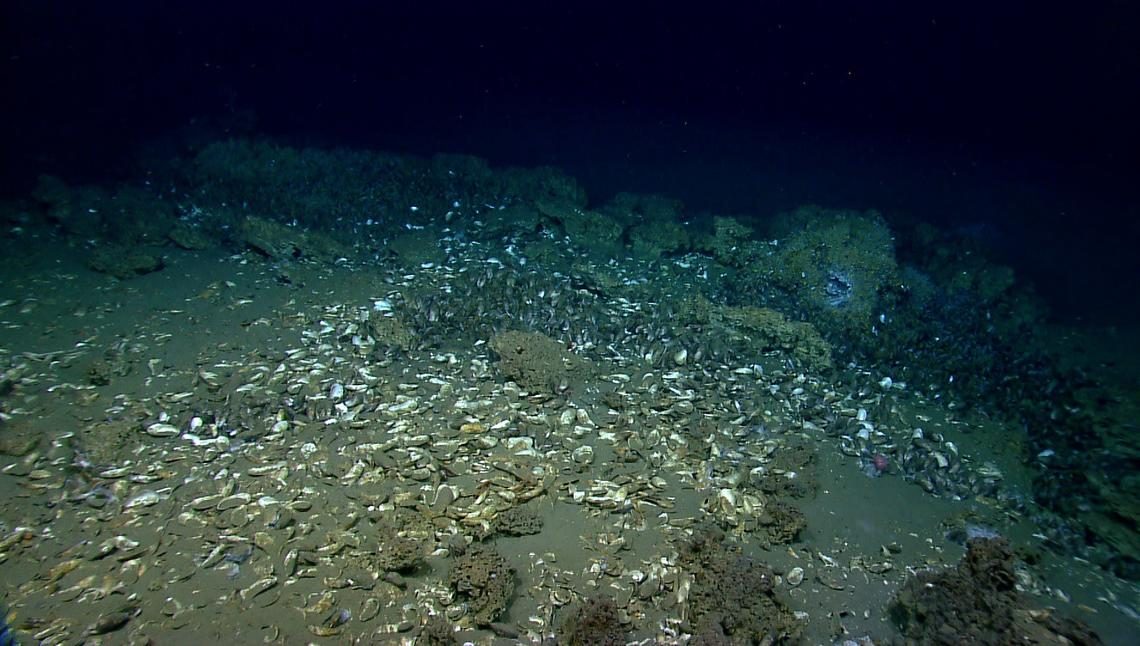The WaterWord: Authigenic
Definition:
- Although some people are born with a wanderlust, wanting to travel all over, some seem to be ready made homebodies. And rocks that are authigenic are the homebodies of geology.
- Authigenic means that rock formed where it is currently located. That’s in contrast to rocks that form from materials that were transported from elsewhere, like sedimentary rocks made up of river sediments carried far from their point of origin.
Etymology:
- Authigenic comes from the Greek authi-, meaning “there,” and genesis, meaning “to be born,” or “to be created.”

Methane-derived authigenic carbonate (MDAC) features from a sample obtained at Baltimore Canyon.Nancy Prouty / USGS Pacific Coastal and Marine Science Center
Use/Significance in the Earth Science Community:
- Authigenic sediments are the primary parts of deep-sea sedimentary rocks. Carbonates are some of the more common types of authigenic sedimentary rocks on the seafloor.
- Many of them form when methane or other hydrocarbon seeps fill the nearby ocean water with minerals that eventually precipitate out, building up in deposits that eventually form sedimentary rocks.

Methane-derived authigenic carbonate (MDAC) rocks on the seafloor on the U.S. Atlantic margin.NOAA's Office of Ocean Exploration and Research
U.S. Geological Survey/Schmidt Ocean Institute Use:
- USGS and SOI are collaborating on a research cruise off the coast of Oregon and Washington that will study methane seeps and what effects they have on the local environment, including the geology surrounding them. This will likely include certain authigenic rocks.
Next WaterWord: Foraminifera

